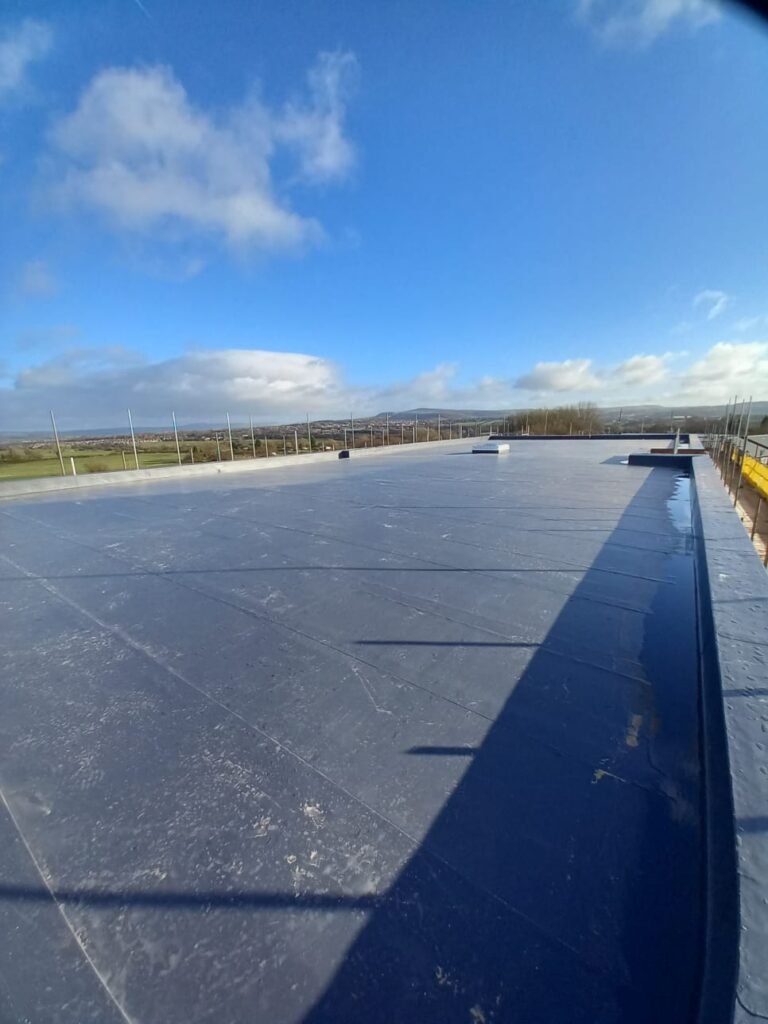Any new building or construction project will have an environmental impact, but there are a number of steps you can take to mitigate this impact and reduce any potential harm. A single ply roof for example can be a great option for residential, commercial and industrial properties that are looking for a more sustainable and environmentally friendly option. So how can you reduce the environmental impact of a building with single ply roofing? And what should you consider during the construction process to ensure this?
How can you reduce the environmental impact of a building with single ply roofing?
A single ply roofing system can have a lower environmental impact in the long term when compared to other roofing options. In fact, there are several different types of single ply membrane that have a BREEAM rating of A+ for sustainability, when these are installed with the correct method and components. The construction of your single ply roof can help to reduce the environmental impact of the building in a number of ways, including:
- Water management
- Energy Efficiency
- ISO 14001:2015 certification and single ply roofing installations
Single ply roofing and water management to reduce the environmental impact
Roofing solutions that can effectively manage storm-water are becoming increasingly important for new buildings across the UK, alongside increasing concerns about sustainability in the construction industry. With an increase in flooding in many UK areas, storm-water drainage is crucial for properties in urban areas with limited vegetation for drainage.
Single ply roofing can play an important role in managing rainwater and reducing localized flash flooding with the roofing system being designed to channel water away from the roof, towards designated drainage points. Professional roofing contractors can use tapered insulation to create the appropriate pitch level for this, as well as drainage, gutters and scuppers to channel the rainwater appropriately.
In addition, alternative or overflow drainage systems can be considered to provide alternative paths for water to escape during heavy rainfall. These are typically positioned at a higher level to ensure adequate drainage during periods of intense rainfall.
Furthermore, roof dams or parapet walls around the perimeter of the roof can help to contain and direct water towards drainage points. These features can prevent water from flowing over the edges of the roof and potentially causing flooding.
For more information about drainage and falls for single ply roofing, take a look at our detailed guide.
Single ply roofing and energy efficiency
Single ply roofing can be a highly efficient option for companies, homes and industrial properties, as the design of the roof itself, and the materials, can help to reduce energy usage and maintain stable and steady temperatures within the building. This thermal efficiency can help to lower your carbon footprint by ensuring that less fuel is used to heat or cool the building in general.
Single ply roofing systems can boost energy efficiency in a number of ways, including:
- A high reflectivity- single ply membranes can reflect the sunlight and this is a highly effective way to keep the property cool during the warmer months, and reduce reliance on air conditioning and fuel powered cooling. Not only that, but by helping to reduce the building temperature, single ply roofing can help reduce the urban “heat island” effect which is caused by buildings in urban areas heating over the summer months, and warming the spaces around them, creating localized areas of higher heat.
- Thermal insulation- single ply roofing build ups use insulation layers to provide thermal resistance, preventing heat from escaping the building during colder months. This insulation helps to maintain a stable indoor temperature and reduce the need for heating, leading to energy conservation and lower utility bills.
- Durability and longevity- single ply membranes are designed to withstand harsh weather conditions, including UV radiation, extreme temperatures, and heavy rainfall. By maintaining their integrity over an extended period, these roofs prevent air leakage and moisture intrusion, which can cause energy loss and damage to the building envelope.
For a more detailed look at single ply roofing and energy efficiency, check out our informative article.
ISO 14001:2015 certification and single ply roofing installations
When thinking about reducing the environmental impact of your property and its roof, it’s essential to choose a professional team that values effective environmental management and who share your low impact goals. The ISO 14001:2015 makes it easier for you to find such a team. This is an international standard that sets out the criteria for an effective environmental management system (EMS), providing a framework for organizations to identify, manage, monitor, and improve their environmental performance. Achieving this certification demonstrates a company’s commitment to environmental sustainability and its ability to comply with applicable environmental laws and regulations. Here at Enviroply Roofing this is one of our many accreditations and we are proud to have achieved this certification.
For more information or advice, or for your new roof installation, why not get in touch with the experts today, here at Enviroply Roofing?

